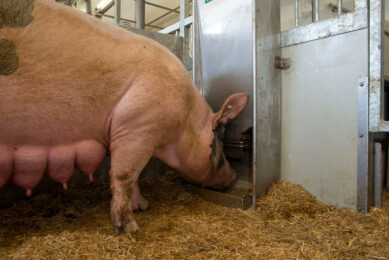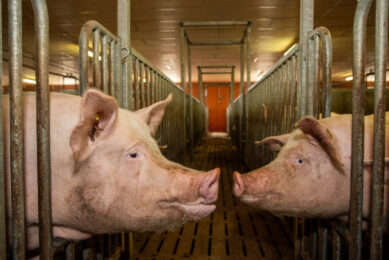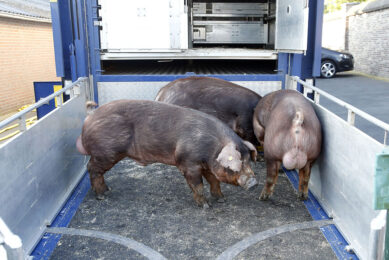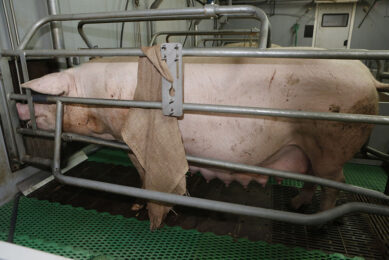Sow lameness decreases gestation length and offspring protection from cortisol
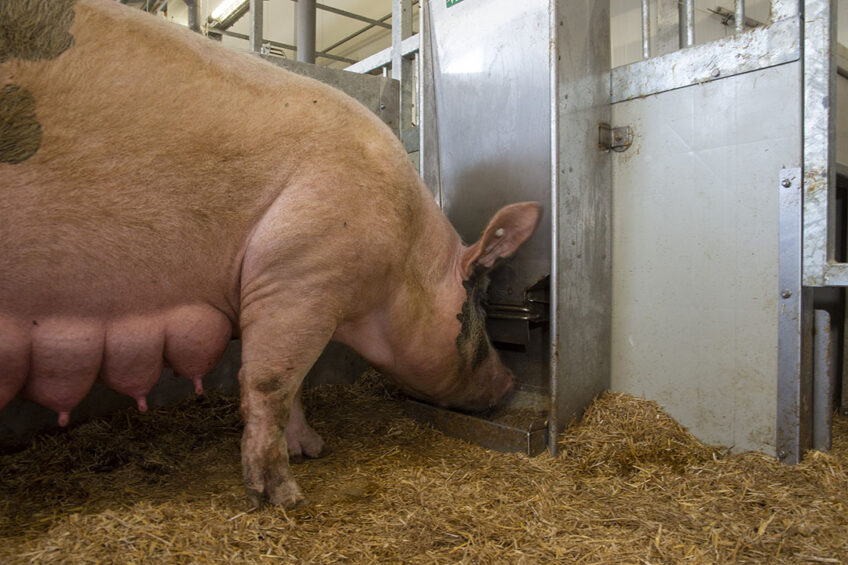
Researchers from Brazil, Italy, and Austria determined the impact of sow lameness during the last trimester of pregnancy on the reproductive performance and placental glucocorticoid concentrations.
This study was carried out on 2 farms in Brazil and Italy. On both farms, pregnant sows were housed in group gestation pens with both solid and slatted concrete floor areas. The researchers transferred all sows to individual farrowing crates 1 week before the expected farrowing date.
During lactation, all sows got a lactation diet 3 to 4 times per day. During the last trimester of pregnancy, the team used the 0-5 locomotion scoring system to assess sow lameness, from 0 displaying a pig that has normal strides, to 5 for a downer pig. Then, they treated sows with a locomotion score of 3 or higher with flunixin meglumine intramuscularly for 3 days and removed sows with a locomotion score of 5 from the group pen into an individual pen.
The researchers collected locomotion data from 397 sows on a Brazilian farm and 114 sows on an Italian farm. On the Brazilian farm, they divided the sows into non-lame and lame sows, and in the Italian farm, they divided sows into non-lame, moderately lame, and severely lame groups. After farrowing, the team collected reproductive data including gestation length, litter weight, average piglet weight, piglet sex, total litter size, and the number of piglets born alive/mummified/stillborn from 30 sows on Brazilian farm and 39 sows on Italian farm. In addition, they recorded piglet mortality during the first week postpartum, and the individual physical characteristics of the piglets to establish an intrauterine growth restriction score. Furthermore, placental cortisol, cortisone, and protein concentration were measured immediately after farrowing.
Impact of lameness on reproductive measures
The incidence of moderate to severe lameness during the last trimester of pregnancy was high in both farms suggesting that a great number of pregnant sows on commercial pig farms could be experiencing pain and stress. In this study, the sow gestation lengths were within the physiological range for the species. However, on Brazilian farm 1, lame sows had a lower gestation length than non-lame sows due to exposure to the stressor (lameness), while in Italian farm, there was no difference between groups.
Impact of lameness on placental measures
The sow lameness score group affected the placental cortisol to cortisone ratio, with the ratio higher for moderately lame sows than for non-lame and severely lame sows. In addition, high cortisol concentrations due to stressful conditions such as lameness could cause preterm parturition. Furthermore, glucocorticoids during pregnancy participate as catabolic agents in growth processes, thus restraining fetal growth and tissue development.
Conclusions
The authors concluded that sow lameness reduced offspring protection from cortisol due to decreasing placental efficiency in inactivating cortisol to cortisone. Although, sow lameness is often recognized when it becomes severe or chronic, thus reducing the possibility of early intervention. Therefore, further studies are needed to investigate the effects of sow lameness during pregnancy throughout the life trajectory of the offspring.



